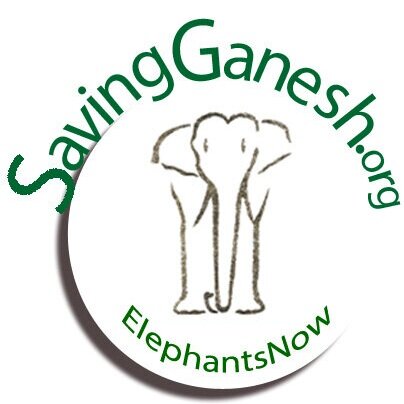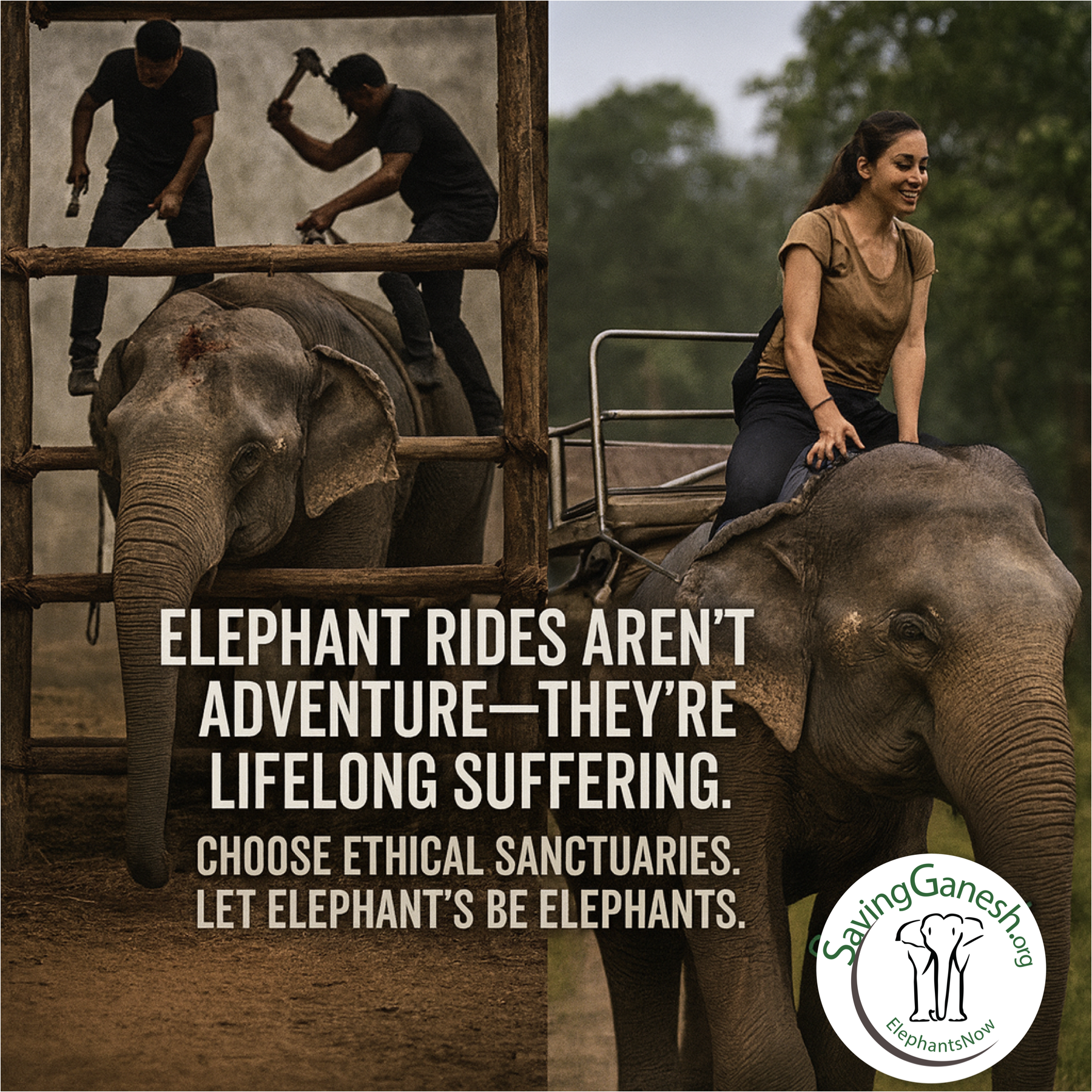Let Elephants Be Elephants
Why anatomy and sentience matter
An elephant’s spine has upward-facing ribs; a horse’s point downward. That difference makes riding and load-bearing fundamentally harmful for elephants. Just as important, elephants—like whales—show sophisticated intelligence, deep social bonds, long memory, and the capacity for grief.
The hidden cost of captivity
What the industry rarely admits: most commercial elephant venues are built on abuse—calves stolen from the wild, then beaten and restrained to keep them compliant. Glossy “conservation” branding doesn’t erase this. Real progress comes from grassroots work with wildlife veterinarians and biologists who document the systemic harm of chaining and isolation.
The ethical model is also the sustainable one
Elephants thrive in herds—moving, foraging, and socializing—not living like inmates in lifelong solitary. They feel pain, suffer, and show compassion. If you’ve ever seen a mother lose her calf, you know the depth of their grief. I have. It’s devastating.
The most profitable long-term model is simple: stop the cruelty and let elephants live as elephants.
Our solution: practical pathways to change
We’ve created a step-by-step manual to help facilities transition from exploitative practices to ethical, non-riding operations that can stay in business and thrive—without cruelty.
Training Guide: Convert tourist facilities to ethical, non-riding models.
Park Transition Example: A concrete roadmap for transforming Mason Elephant Park in Bali.
Change is inevitable. Misinformation isn’t a strategy—evolution is.
Help protect Asia’s elephants
We seldom ask for support, but the moment demands it. Help SavingGanesh.org continue this work.
Understanding Elephant Welfare: Tradition, Science & Ethics
There’s passion on all sides of this conversation — and that’s good. But there are persistent misconceptions about elephant anatomy and welfare that deserve clarity.
Elephants are not built for repeated riding
Elephants do not have upward-arched, load-bearing spinal structures. Their vertebrae feature broad lateral processes — meaning weight applied from above creates risk over time, including:
Nerve compression
Tissue and ligament damage
Chronic musculoskeletal strain
Pressure sores and joint degradation
This is not opinion; it is supported by decades of veterinary imaging, clinical research, and long-term welfare studies.
Strength ≠ suitability for riding
Elephants evolved tremendous forward-driving strength — for pushing through forests, uprooting vegetation, and carrying weight with their trunks. Repetitive load on the spine from above is unnatural.
When evaluating welfare, it’s not just about an elephant’s size. It’s about:
Repetition and duration
Terrain and heat stress
Soft-tissue strain over time
Psychological pressure under control-based training
Loss of natural movement and herd socialization
Tradition deserves respect — and evolution
Elephants hold profound cultural significance across Asia. True mahout culture is rooted in devotion and lifelong guardianship — not commercial turnover.
Mass-tourism riding, where elephants carry strangers in saddles for hours each day, is not ancient tradition. It is a modern business model, and the science is clear: it causes harm.
Leadership from within Asia
This ethical shift is not driven by “Western judgment.” It is led by Asian veterinarians, sanctuaries, conservationists, and former trekking operators who deeply love elephants and are pioneering humane alternatives.
What real elephant guardianship looks like today
Ethical care embraces:
✅ Walking with elephants
✅ Free movement, foraging, and natural social groups
✅ Relationship-based mahout stewardship
and rejects:
❌ Production-line riding tourism
Science and tradition can coexist
Honoring elephants means honoring both ancestral respect and modern welfare knowledge.
The goal is simple:
Let elephants live as elephants — with dignity, movement, and family.

